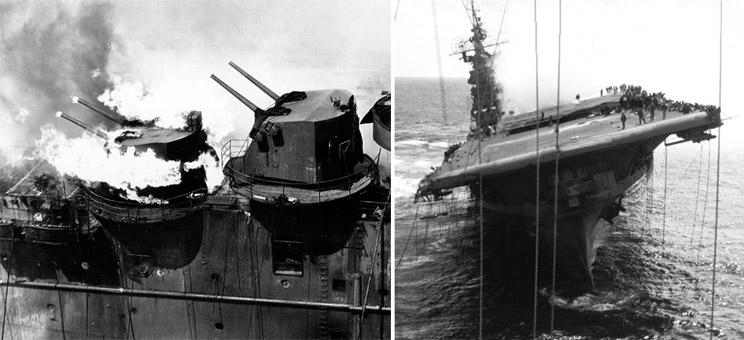I Was There! - In the Nightmare City of Rangoon Today
The War Illustrated, Volume 9, No. 208, Page 91, June 8, 1945.
The Burmese capital was reoccupied by British forces on May 3, 1945, after nearly three years' occupation by the Japanese. How the once lovely city had been transformed by the enemy to a horror almost beyond belief is told by Arthur Helliwell, the Daily Herald's special correspondent.
The Japanese have left their ugly trademark smeared heavily across the face of this once lovely city – the trademark of filth and degradation and misery they left in their wake across half Burma as we chased them down to the sea.
All the way from the Chindwin we have seen the same thing in their abandoned jungle camps that looked more like pigsties than human habitations. But here in Rangoon, where traces of the city's former beauty still shine through the dirt and decay, the trade-mark of Japanese bestiality is much more horrifying.
The refuse of months is piled up feet high along the broad, tree-lined, sun-drenched boulevards. Gutters are clogged with it and over the whole city there hangs a cloying and nauseating stench that sticks in your gullet – the vile odour of decay.
Rangoon today is a nightmare city – a city where the streets are paved with millions of worthless Japanese currency notes, where beggars squat on piles of paper money and beg for alms, where ownerless buffaloes roam the pavements of a city riddled with loathsome disease.
The still smouldering vaults of the impressive white Bank of India building, the bodies of native looters stabbed to death in a crazy fight for money lie sprawled among the litter of bloodstained Japanese notes.
People who remained here through the Japanese occupation are hungry. The children have that peaked, hollow-eyed look that comes from months of semi-starvation. And when you see them another tragedy of this sad city hits you. In Rangoon today children never laugh or play games. Most of them seem to have forgotten how to smile.
They simply squat and stare with their wizened little faces puckered in bewilderment and once again you recognize another trade-mark of the “sons of heaven” – the stamp of fear.
Reconstruction work has already begun, and out in the dirty river trim Royal Navy minesweepers are weaving to and fro among the gently bobbing sampans, clearing the waterway for the big freighters that will soon come sailing up to Rangoon again with supplies for more Allied victories.
Previous and next article from I Was There!
I Was There! - I Went With the Green Berets to Osnabruck
Senior Brigade Chaplain and R.C. Chaplain to the 1st Commando Brigade, the Rev. Terence Quinlan, R.N. (known throughout the Brigade as “The Bish”), tells how he stopped a sniper's bullet – and m
I Was There! - Blasted for Hours Off the Coast of Japan
How Japanese bombs struck the 27,000-tons aircraft carrier U.S.S. Franklin on March 19, about 60 miles off the southern coast of Japan, causing one of the most appalling losses of American lives in na
Index
Previous article
Along the Crowded Roads of War
In this, the last article of this series, I will describe briefly some of the many things I saw for which there is no space to give a full description. Follow me in imagination on long journeys across
Next article
Now It Can Be Told! - 'Operation Pluto'
One of the Greatest supply stories of the war was released on May 23, 1945, when the existence of an oil pipeline system across the bed of the Channel to the Continent was revealed. This all-British t




